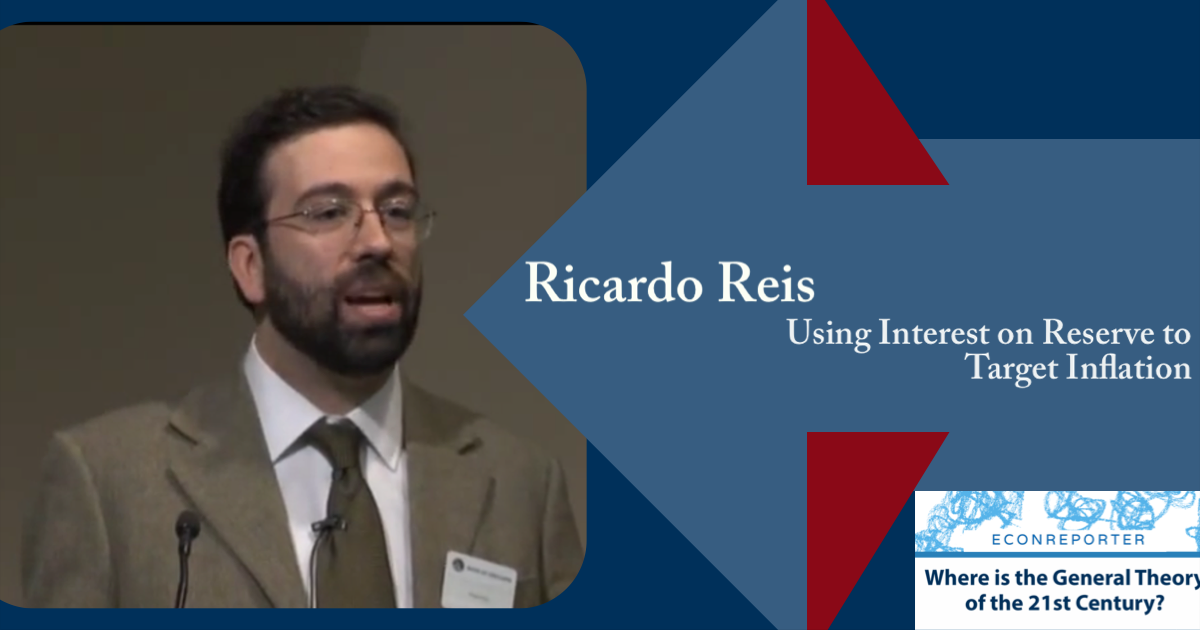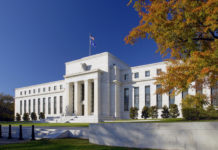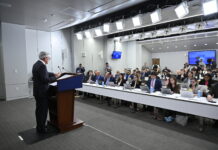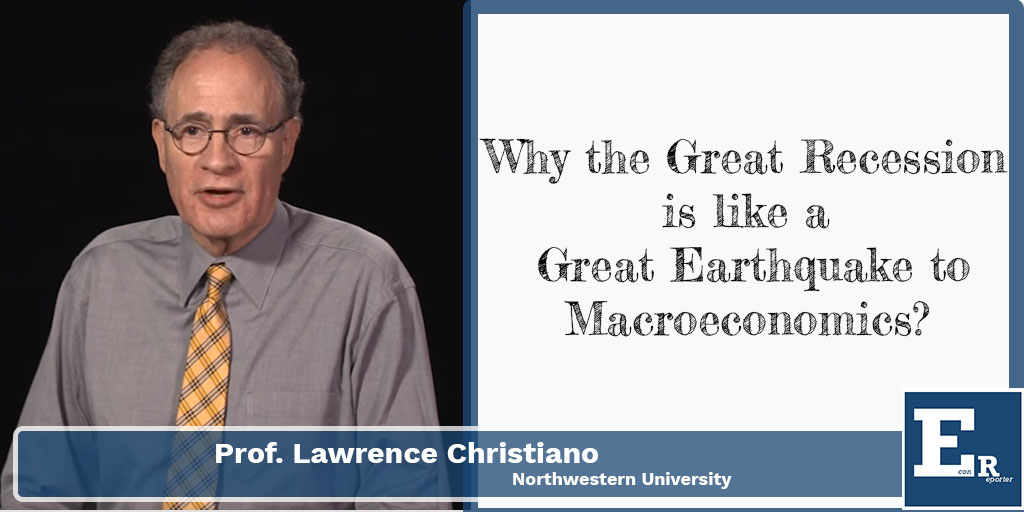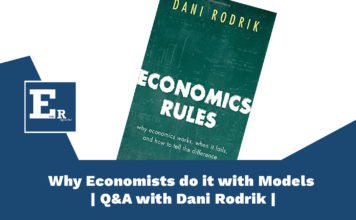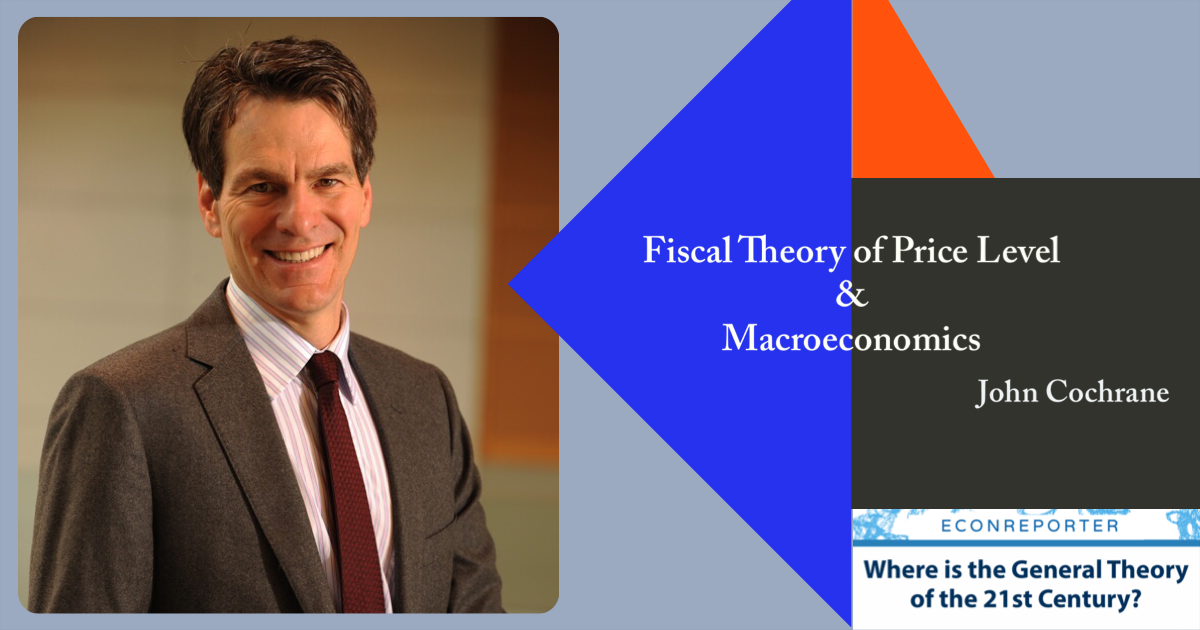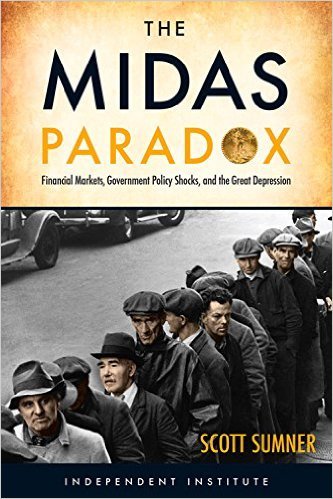This is the eighth installment of our interview series “Where is the General Theory of the 21st Century?”
In this installment, we continue our talk with Professor Ricardo Reis, A.W. Phillips Professor of Economics at the London School of Economics. Reis has shared with us his view on the state of Macroeconomics in the first part of the interview.
Ricardo Reis: “The Performance of Macroeconomics is not that bad!” | #WITGT21 Interview Series |
In this part II of the interview, Reis discuss with us his latest research project – “Reservism”, the study of the role of reserves on central bank balance sheets and their implications for central bank solvency, quantitative easing, and the ability to control inflation.
(The interview has been slightly edited for clarity, all errors are ours.)
Econreporter – Q / Ricardo Reis – R
Q: Why do you start the research on “Reservism”? What makes Reserve so special?
R: This research line I have been pursuing for the last few years is very much driven by the real-world events.
In the last six years, the world of central banking, the way central banks operate, the way they set monetary policy, has changed radically. Even most people I admired don’t even quite understand it. The main radical change is that we went from a system in which central banks do the so-called open market operations, where they brought a few million bonds here and there, and in doing so affect the interest rate. Back in the days, central banks were using a fairly tiny balance sheet. Now we instead have a system which central banks’ balance sheets are very large.
Why are the balance sheets very large now? Because on the liability side, there are a huge amount of reserves, i.e. the deposit of banks in the central bank. That means nowadays that the way that central banks actually control inflation is not through some Federal Reserve fund market, nor some interbank markets in the Europe, but rather by actually choosing an interest rate on reserves. It is not like the target of the Federal Fund rate, it is an actual interest paid by the central bank.
Central Bank’s Balance Sheet and the Rise of Reserves | #WITGT21 Explainer |
Now that the balance sheet is much larger. There are a lot of research interest in the things that the Federal Reserve brought, but to me the fact that you now have a very large deposit by the bank in the central bank it is more interesting. For instance, the way you still see the press writes about the monetary policy is that the central bank lending to banks. Well, now actually it’s the banks that lend to the central bank. We have massive reserve deposit by banks in the central banks.
Reserves in the central banks used to be an asset that was essentially zero on the balance sheet. Aside from the so-called required reserve, excess reserves of the banks are close equal to zero. Now it is one of the largest financial assets in the US. So, we have this new asset which is fundamental to the financial market, to the monetary policy, and it has fundamentally changed what the central bank balance sheet does.
A lot of my research in last year has been focused on understanding what does it mean and what does it imply for the control of inflation, for the risk of central bank insolvency and among others. That’s what I called Reservism, trying to understand what is the role of this new asset called reserve has on the economy and the central bank policy.
Once you understand that these reserves in the central banks are very large, the next thing one can do to understand what effect they have is to try to understand to what extent they could be different.
Reserve right now are overnight deposit in central bank by banks, they are paid a given interest rate but once you started thinking about what they are, you realized that those could be different. They could, instead of promising an interest rate, promising a different payment. They could be, instead of overnight, a 30-day deposit. They could be lots of different things. That is what led to some of the more recent research.
Q: In brief terms, how can the proposed payment on reserve process help central banks achieve the targeted price level?
R: The intuition is as following: the reserve is a very special asset that has one particular property – reserves are the unit of account in the economy. One dollar of reserves defines what the dollar is. It is one unit of deposit in the central bank that defines what a dollar is.
People of course more used to thinking, “Oh no! It’s the piece of paper with some printing of the queen that defines what a pound is!” But remember those pieces of paper are nothing but something that exchanges one to one with reserves in the central bank. So, reserve is the unit of account of the economy. One unit of reserve always worth one dollar.
Now imagine that instead of promising to pay them the nominal interest rate, you promise that the interest rate, i.e. the remuneration of the reserves, is indexed to the price level. So, in de facto, the reserve essentially pay a real payment in the same way that the inflation-indexed government bonds do. There is no barrier to doing this. After all, it is the same way government issued the inflation-indexed bonds, so can the central bank.
The central bank can say that, instead of paying 3% of nominal interest on reserve, it will pay 3% times the price level tomorrow. If it does that, note that central bank is promising a real payment tomorrow to whoever hold the reserve.
On the other hand, there is a real interest rate pinned down in the economy that has to do with investment opportunities and how impatient people are. If the central bank promises a real payment, under the no-arbitrage condition, this pinned down the real value of the reserves today, as the real payment tomorrow divided by the real value today is equal to the real return.
The payment on reserve pinned down the real value of reserve today. And back at the beginning, we realized that the reserve is worth a dollar. So, if we have pinned down the real value, what also have we pinned down? We have pinned the price level. This is because the real value of one dollar of reserves is precisely given by the price level.
So, by choosing this remuneration of reserves, and making it a real payment indexed to the price level, you have de facto pinned down the real value of reserve today, which is nothing but the price level.
What is Payment on Reserves Process? | #WITGT21 Explainer |
Q: So you are suggesting that the central bank can actively adjust the real payment on reserve, so the achieve the targeted price level?
R: Yes. Let me make it clear that this is an academic work, in the sense that I am not saying that the central banks should do it tomorrow.
But I think it is important that this work shows, first, we now understand the role the reserves play. That allows us to think about new roles the reserve could play in the sense of innovation. For example, we can try remunerating the reserves differently.
Second given the price level can be pinned by a no-arbitrage argument in the financial market, which is simply the fact that reserve offers real payment will lead to movements in financial markets that affects the value of the currency. In that sense, it is similar to the Taylor Rule. The Taylor Rule, after all, is also promised payment on reserve that then lead by an arbitrage pinning down the price itself.
But it is also very different from the Taylor Rule and this is the third point: the theories by which we used to pin down the price level in modern monetary economics, they are well known to have some weaknesses. In particular, the Taylor Rule Principle has a theoretical weakness as it relies on controlling inflation expectations infinitely far in the future. If we all think that inflation would accelerate to infinity, and we think that is fine, then the Taylor Rule can’t prevent that from happening.
In contrast, this payment on reserve process approach solves some of the theoretical difficulties that the research on the Taylor Rule has. In doing so, it helps us understand better on how the price level is actually pinned down in the modern economy. It is also an advance allow us to really understand how our price level is determined.
Q: In comparison to Taylor Rule, which has some assumptions on the natural rate of interest rate and effects on the real economy, and payment on reserve process doesn’t say anything other than the inflation target…
R: No, the payment on reserve process allows for inflation targeting. It simply said that you can make the payment on reserve depends on the inflation target just in the same way the Taylor rule does.
The difference is not on that target, the different is instead that the Taylor Rule promises a return on the reserve, then it promises if inflation deviates from that target, you will increase the interest rate by more than 1 to 1. That is the Taylor Principle. If inflation rises above the target by 1%, you will increase the interest rate by, say 1.5% if the Taylor Coefficient happens to be 1.5, as originally proposed by John Taylor.
The payment on reserve rule, on the other hand, is not what we called a feedback rule. It doesn’t say how you should adjust interest rate to what inflation is at some point. It said that what the payment on reserve conditioned on what your price level target is, but doesn’t promise in any way to response with that payment to what the price level happens to be.
Moreover, you have very rightly pointed that in the Taylor Rule one needs to track not just current inflation but also certain things like natural rate of interest or natural rate of unemployment to know how to adjust the nominal interest rate. Under the payment on reserve rule, what you need to track is not any of these natural and unobserved factors, but instead, an observable variable, i.e. the current real interest rate in the economy.
Q: The payment on reserve process focused on getting the inflation to the inflation target. Do you think payment on reserve process can be further developed into a tool for economy stabilization tool?
R: As of now, what I have discussed, whether it is the payment on reserves or the Taylor Rule, it allows one to trade off how much you want to stabilize the inflation as opposed to real activities. This all depends on how do you want to adjust your inflation target in the short-run, to be equal to 2% long-run target, or to deviate and therefore have a shorter target to let inflation deviate from 2%, in order to accommodate real activities.
So, for both the payment on reserve rule, the Taylor Rule or most modern implementation of monetary policy, to say that in the short run the central bank is essentially trying to target inflation around a number, that’s not too precisely. In order to accommodate the Phillips Curve and the real activities considerations, at any point in time you may say even though the central bank has a 2% inflation target, over the next six months you may be happy to have inflation to be, say 1.5%. Why? Because the unemployment is much too high compared to some natural rate, or so on.
Thinking in this way is sometimes referred to as the inflation targeting view of the world. That is, you always describe monetary policy in terms the inflation target. It does not in any way preclude you from thinking about the real activities. It simply said you understand that ultimately the central bank control inflation and their way of stabilizing the real activities is to have inflation, the short run target if you want, deviate from what the long run target is. This is just the language that I adopted to describe this.
Q: Does the payment on reserve process require the central bank maintain the balance sheet at the saturated level of reserve?
R: Yes and no. What motivated these works was that we are a point where we have abundant reserves. So formulating payment on reserves and how they are remunerated is very natural because one can do so while keeping that choice independent of the level of the reserves.
If you go back to a very small balance sheet, where we don’t have a saturated market anymore, you could still do payment on reserves. Now the implementation of the payment on reserve would have to come with the open market operations. That is just like what we do with the Taylor Rule before we have the market saturated with reserves. All the things still work, but the implementation is a little more complicated because what you are doing is that doing open market operations to target, not a nominal interest rate on the interbank market, but rather a real payment on the reserves and on the interbank market that sets that.
What is the Saturated Level of Reserves? | #WITGT21 Explainer |
Q: You have mentioned that you suggest the Fed should maintain a lean size of balance sheet, around 1 trillion dollars, around the level in 2011. How do we know how high is the saturated level of reserve? Is it we can only know it ex-post?
It is not easy to estimate the level of saturation. What I show in my recent paper called “Funding Quantitative Easing to target inflation” is that the evidence for the US seems to show that the saturated level was reached around 2010 and 2011, when the level of reserves reach approximately 1 trillion dollars. So, the evidence suggested that it happens around 1 trillion in the past.
But you are right to ask, what is it going to be in the present and in the future? Luckily there is a relatively easy indicator to see whether it is saturated or not. If the interest rate on the interbank market, i.e. the Federal Fund rate or the EONIA in the case of Europe, happens to be significantly above the interest the central bank is paying on reserves, then we know the market is not saturated. If the two of them is very close to each other, then the market is.
In some ways, it would not be hard for the central banks to keep track on this. If they ever see the interest on interbank market starts rising a lot, the central bank simply has to issue more reserves by buying things from banks, crediting them in terms of reserves account in the central banks and they can keep the reserves beyond the saturation point.
This is not only easy to implement, it is also desirable. Keeping the interest on reserve equal to the interest on interbank market is, after all, implementing a very old idea of monetary economics – having the optimal liquidity provision of the central bank. This very old idea has a name, the Friedman Rule. Milton Friedman was the first to say that the opportunity cost of liquidity should be driven down to zero, so the central bank can always supply liquidity to the market. If we have the short-term interest rate in the interbank market equal to the interest of reserves, that’s mean we have optimally provided liquidity to the market, by driving the opportunity cost which is nothing but the differential of the interest rates to zero. Doing so would not only be easy because it only requires measuring two interest rate but also is desirable from an optimal liquidity provision as Milton Friedman proposed almost 50 years ago.
The Friedman Rule is often taught in terms of driving the interest rate to zero. Why? Because banknotes pay a zero-interest rate by definition. However, in nowadays money is not banknotes. The biggest fraction of the monetary base now is not banknotes but is reserves. The reserves pay an interest rate. So implementing the Friedman Rule does not imply driving nominal interest rate to zero anymore. It simply implies having the nominal interest rate equal to interest on reserves. That we can do easily with any level of interest rate.
Q: Just as you said, payment on reserve allow us to set the interest rate to any level and we can still satisfy the Friedman Rule. What about the negative rate? Is it possible for interest on reserve to be negative?
R: In principle, yes. There is an enormous debate in the last couples of years. Quite a few very serious research that has shown that in principle one can pay negative interest on reserves, in so far as the alternative, which is the banknote, could be commensurately costly for an agency who has to engage in storage cost compares to holding the reserves.
Paying interest on reserve does not change the trade off, which is ultimately the problem or the feature, that banknotes pay zero interest and the reserves pay an interest. If you have the interest on reserve very lower, people will switch from electronic money, i.e. reserves, into banknotes. That puts a constraint on how low nominal interest rate can go. The same applies to interest on reserve, there is going to be some constraints. We know that constraint is not zero, it is somewhere below it. Exactly where it is a topic for great research in the last few years.
Q: Do you think the Fed’s Reserve Repo Program (RRP) is a more powerful tool compared to normal reserve, as RRP allow the Fed to directly engage with money market participants?
R: The answer is a big and unambiguous yes. The Federal Reserve, because of the peculiarity of the legislation in the foreign financial market, only allows a certain sub-type of banks to deposit at the Federal Reserve. Though we are already talking about few thousand banks, but still only certain institutions can deposit reserve in the central bank. There is a huge amount of money market fund and other government-sponsored entities like Freddie Mac and Fannie Mae cannot deposit at Federal Reserve. The RRP is nothing but a way to allow them to deposit reserve in the central bank.
Whenever I said reserve in this interview, I mean reserve plus the RRP deposit for the case of the US. In so far, using these interests on reserves to implement monetary policy, by which I mean to target the price level and implement the optimal amount of liquidity, you want these to be as broad as possible.
So, the RRP, by broadening the participation, it is beneficial. Without it, the transmission of the monetary policy has to rely on the arbitrage between those who can deposit at the Fed and those who cannot. Allowing more and more to do the deposit, you end up with a more robust transmission mechanism.
Q: Is there any program similar to RRP in the Eurozone?
R: No, because it is not really necessary. This is a fairly US phenomenon. It has to do with who can deposit in the central bank. The number of banks that can hold reserves, which in the euro system is simply called deposit in the central bank, is very wide. You do not need to have two programs in parallel.
Q: Do you agree with the view that implementation of Interest on Excess Reserves (IOER) in 2008 is a factor that worsens the Great Recession?
R: I think I disagree. Paying interest on reserve is one of the best thing, if not the best, that has come out of the crisis. It added a very important toolkit in the Federal Reserve. The Bank of England and Euro system has been able to pay interest on reserves for a very long time. The Fed only has the authority to do so starting in December 2007.
I think this is an essential, important and crucial tool for monetary policy. It is very important that it do so, it would be impossible for the Fed to response to the crisis without having been able to pay interest on reserves. It is not only a good thing, it should keep on happening.
R: I think there is an enormous amount of very interesting research on the financial spillover of QE type program across countries. I think the evidence, for the most part, is that it’s an open question. But I have been an average consumer of that research, I am very open mined which either way would go. I think it is possible that that QE liquidity has spillover internationally. It is also possible that they do not.
I am slightly more convinced so far that they do have spillovers. But I am less convinced that those spillovers are very large and significant. But again. As of now, the dust doesn’t settle, and I am open-minded and don’t really have an answer to you beyond saying it is a very important research topic
>>> You can follow EconReporter via Bluesky or Google News


